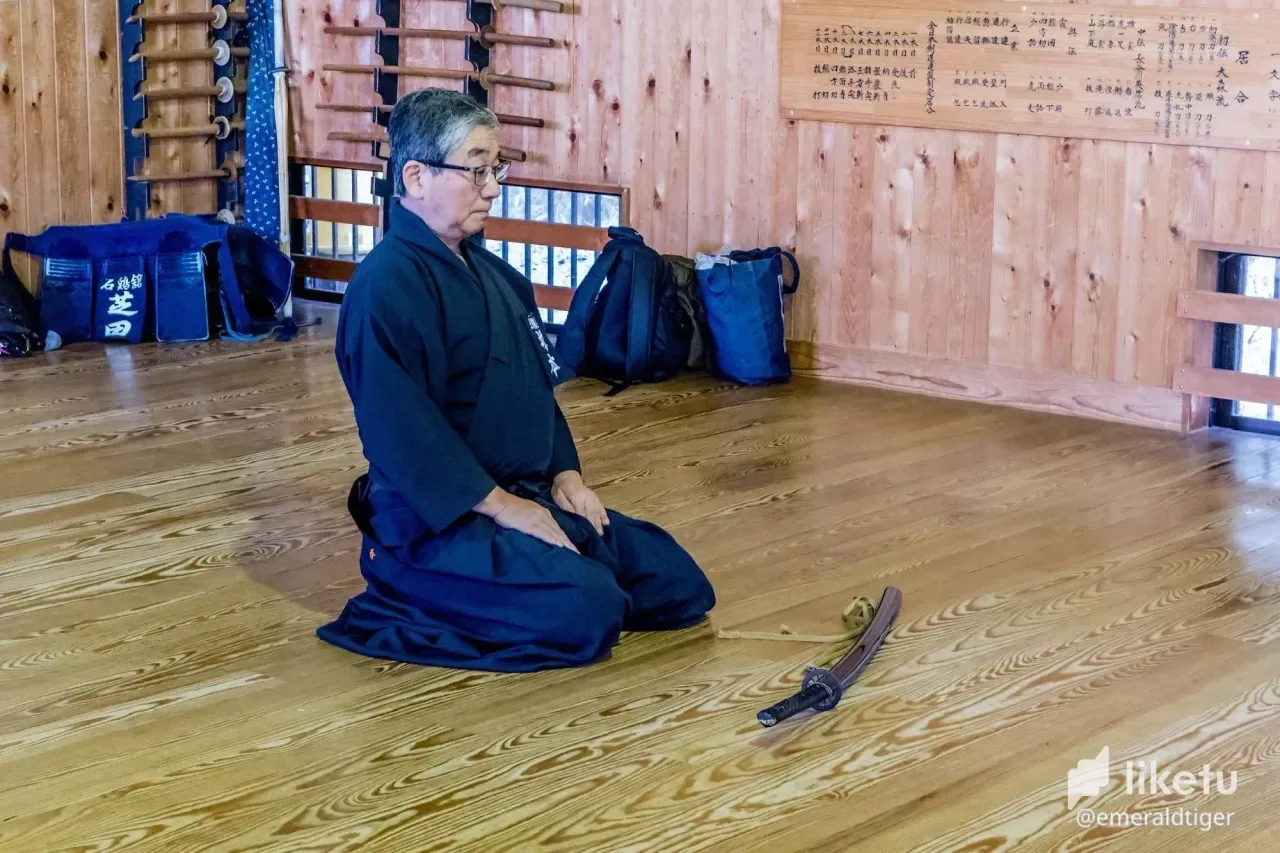
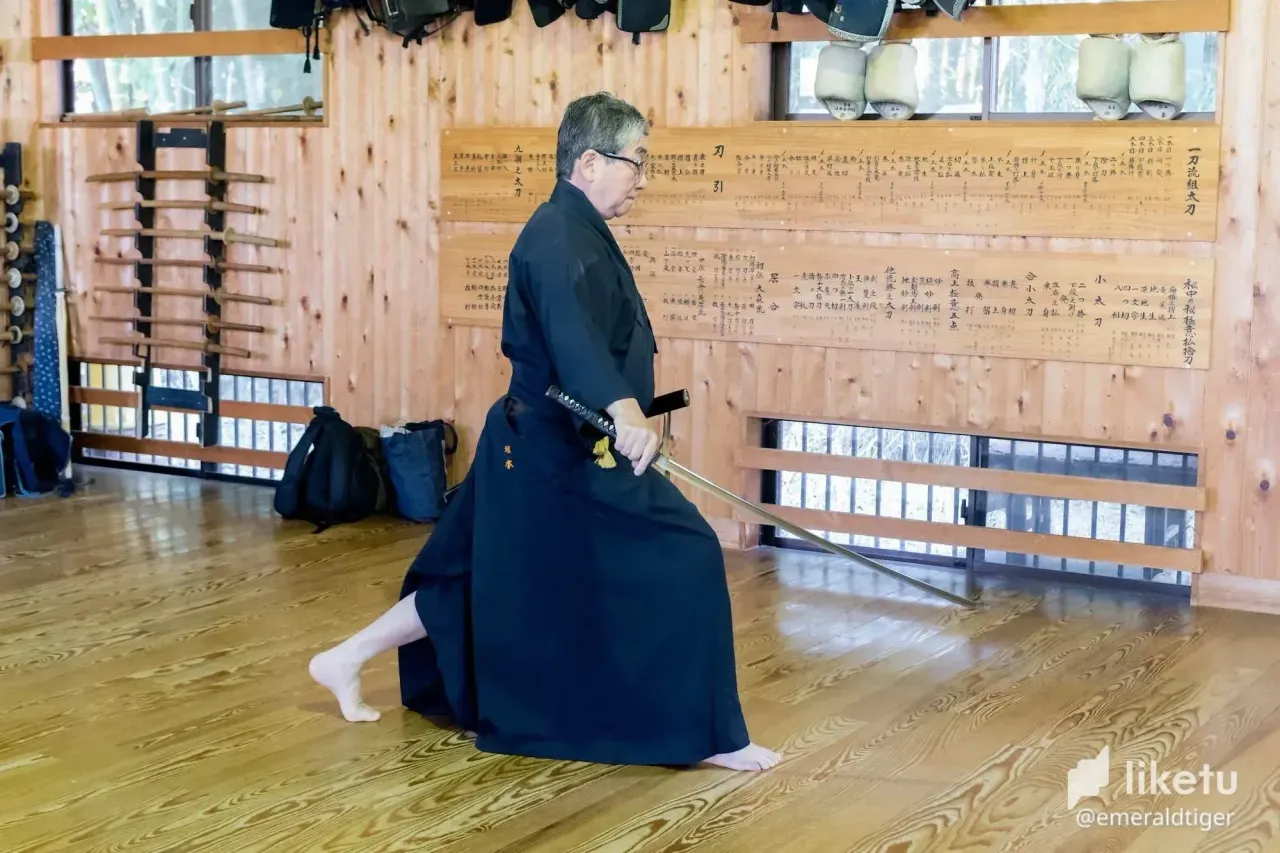
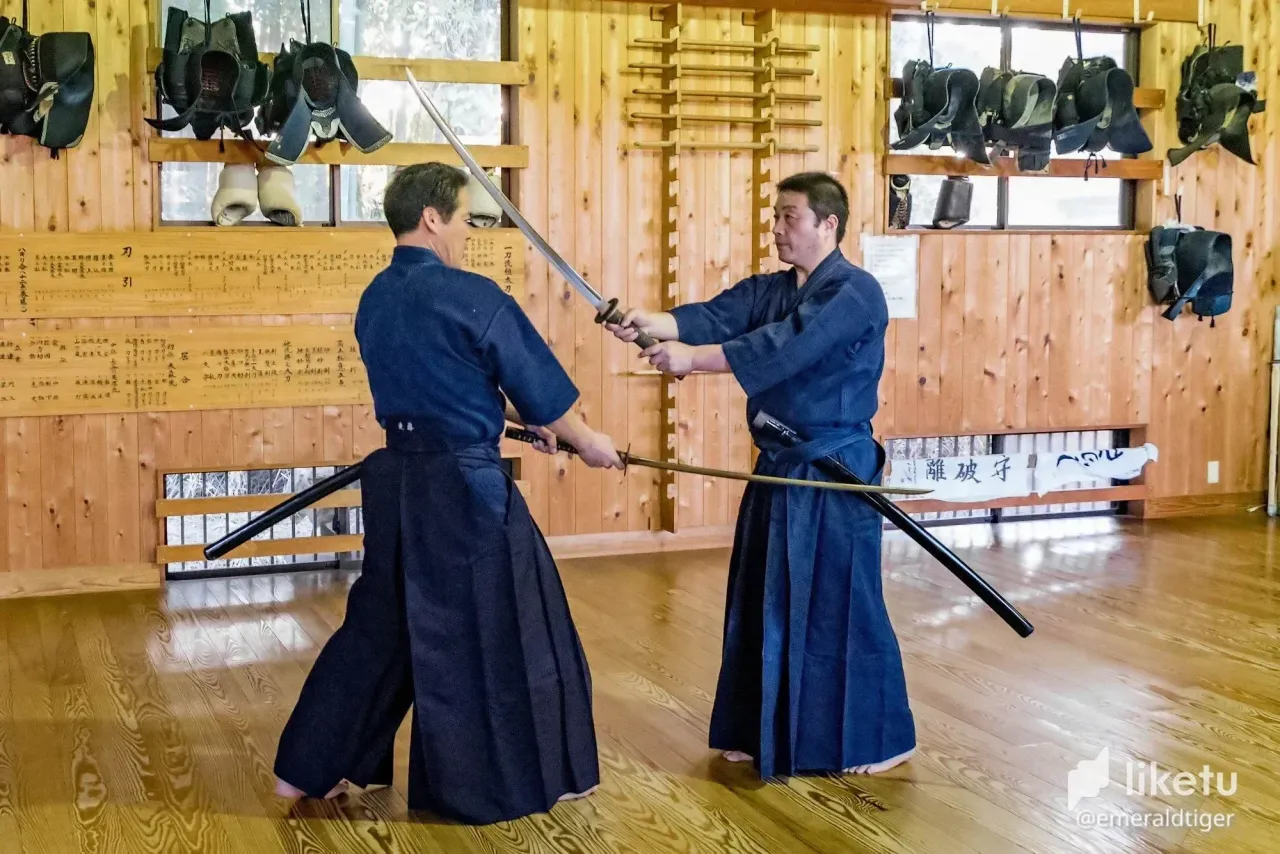
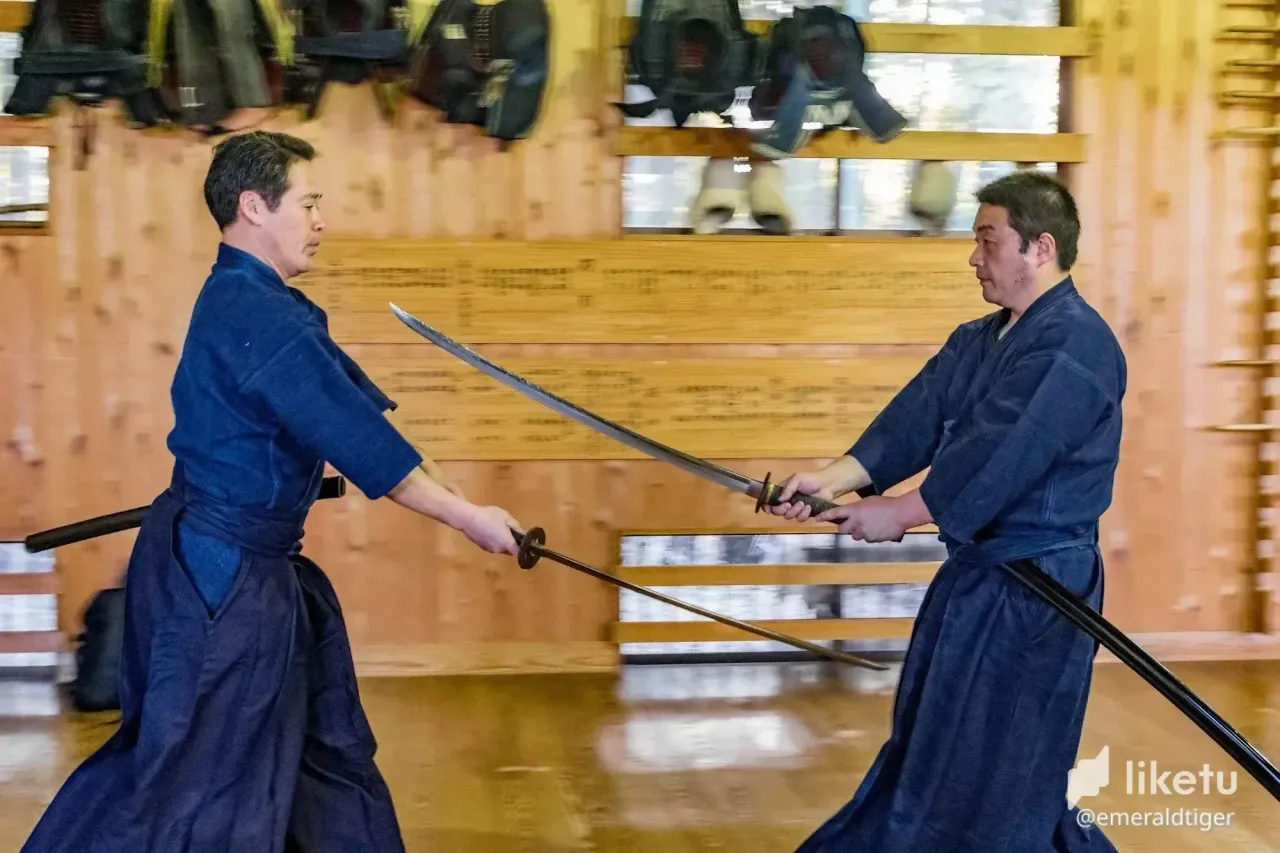
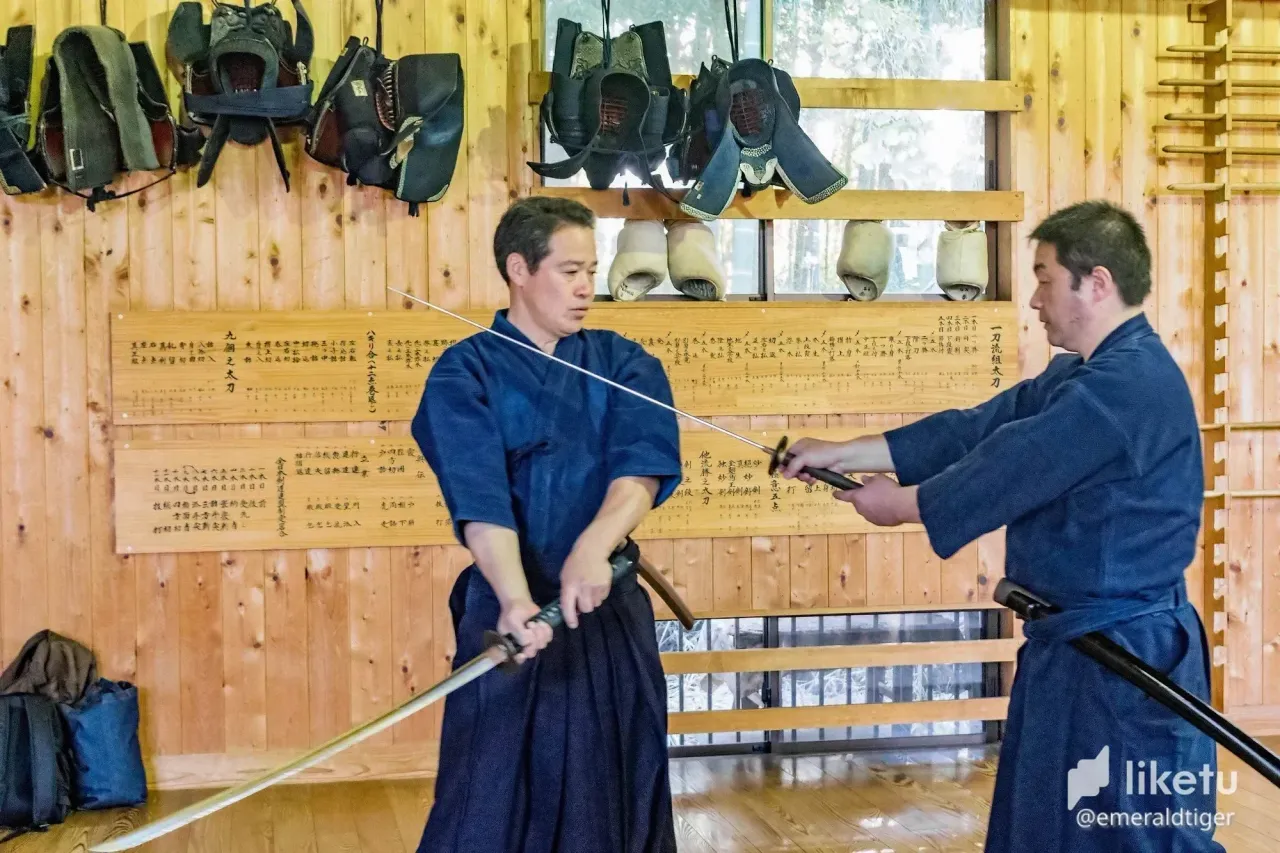
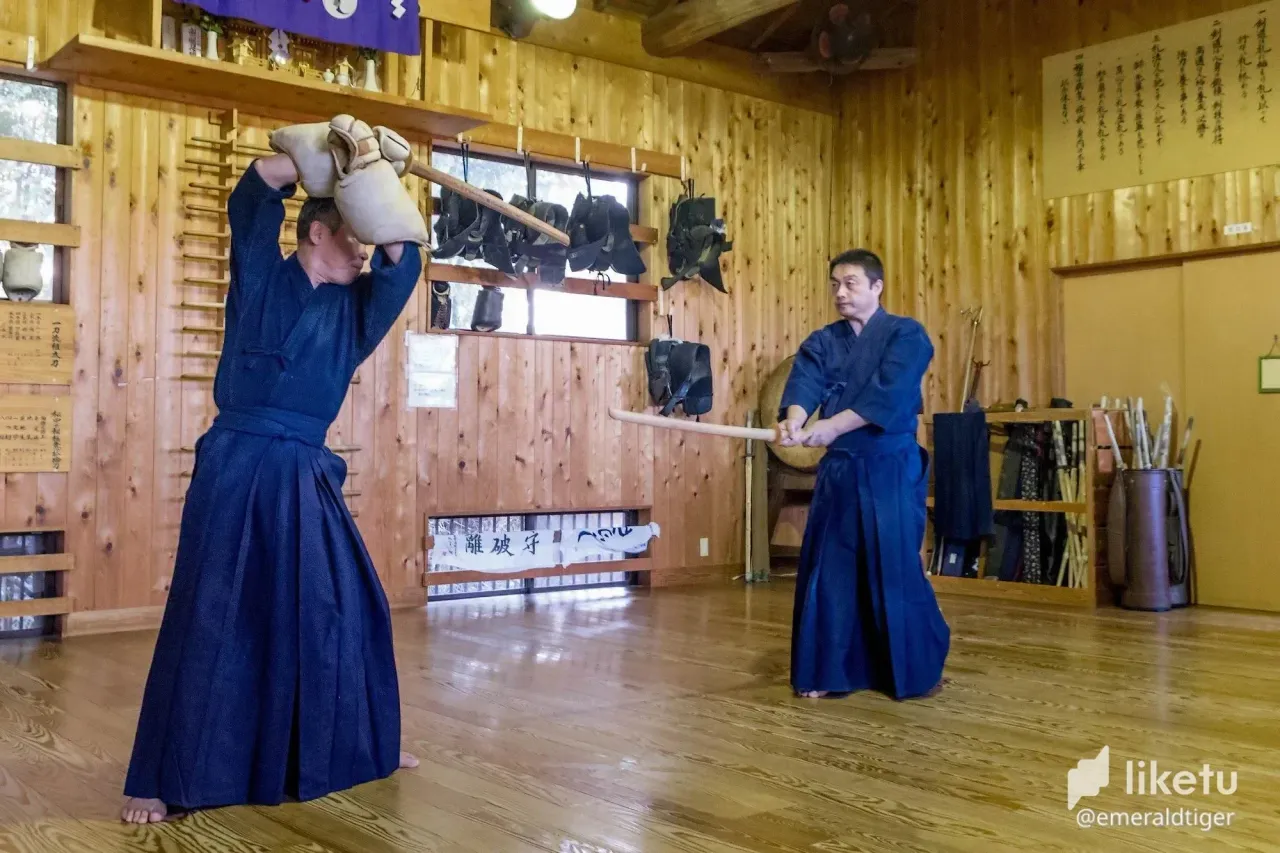
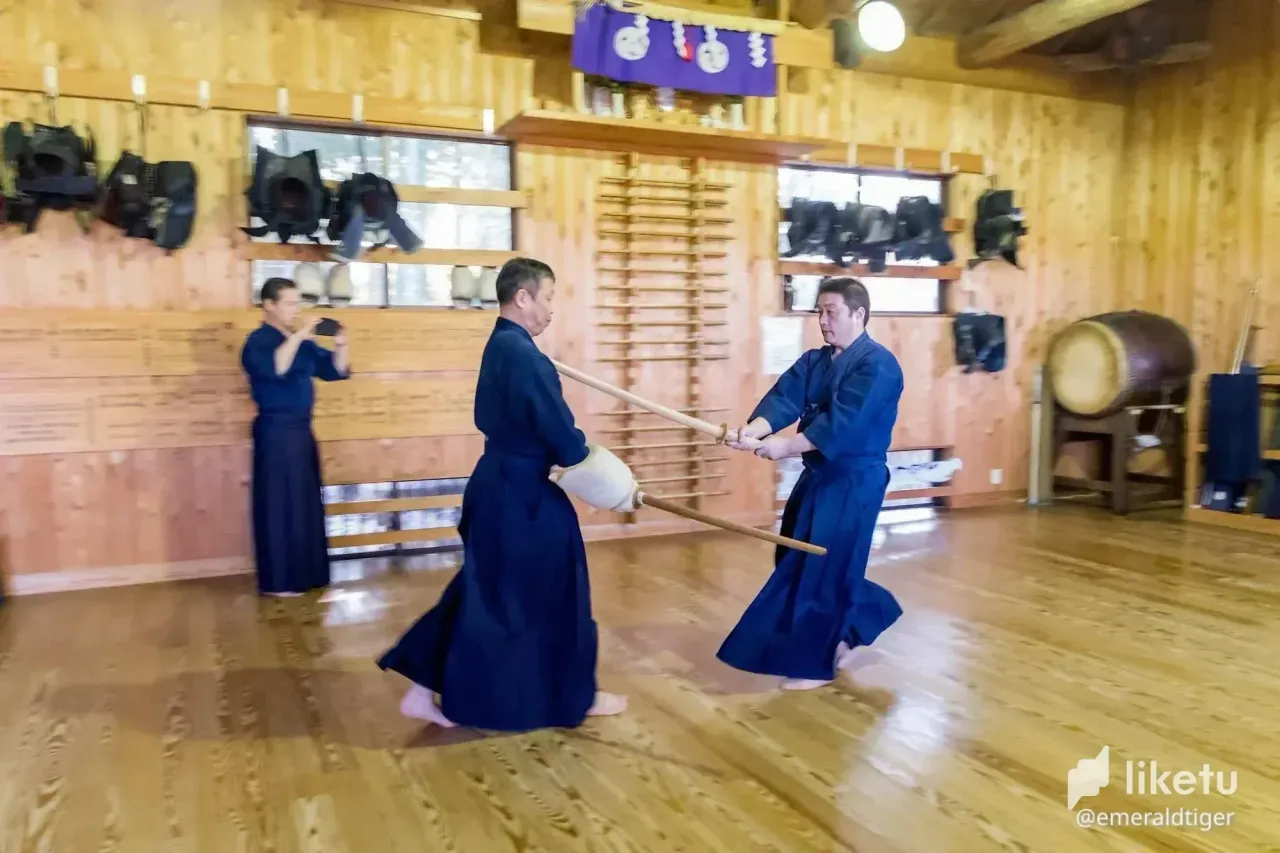
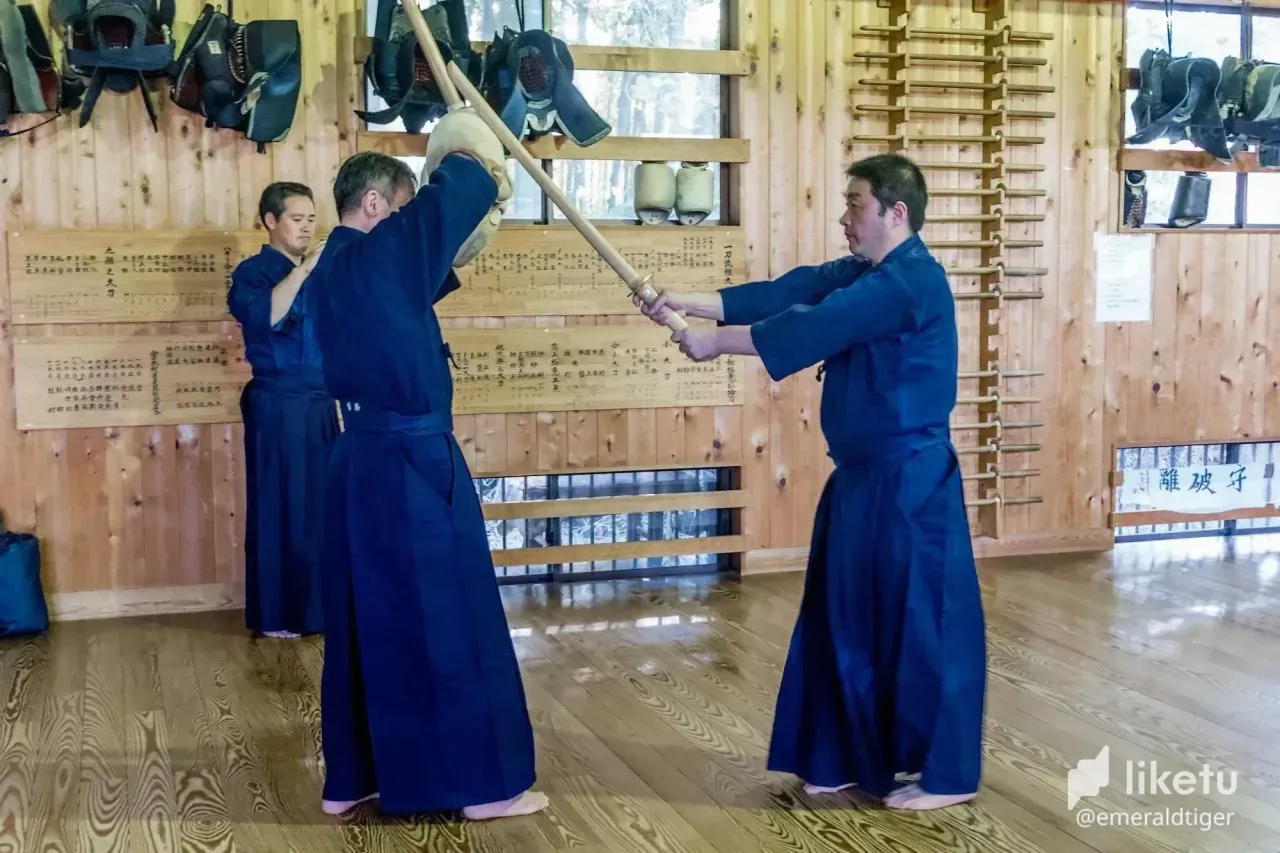
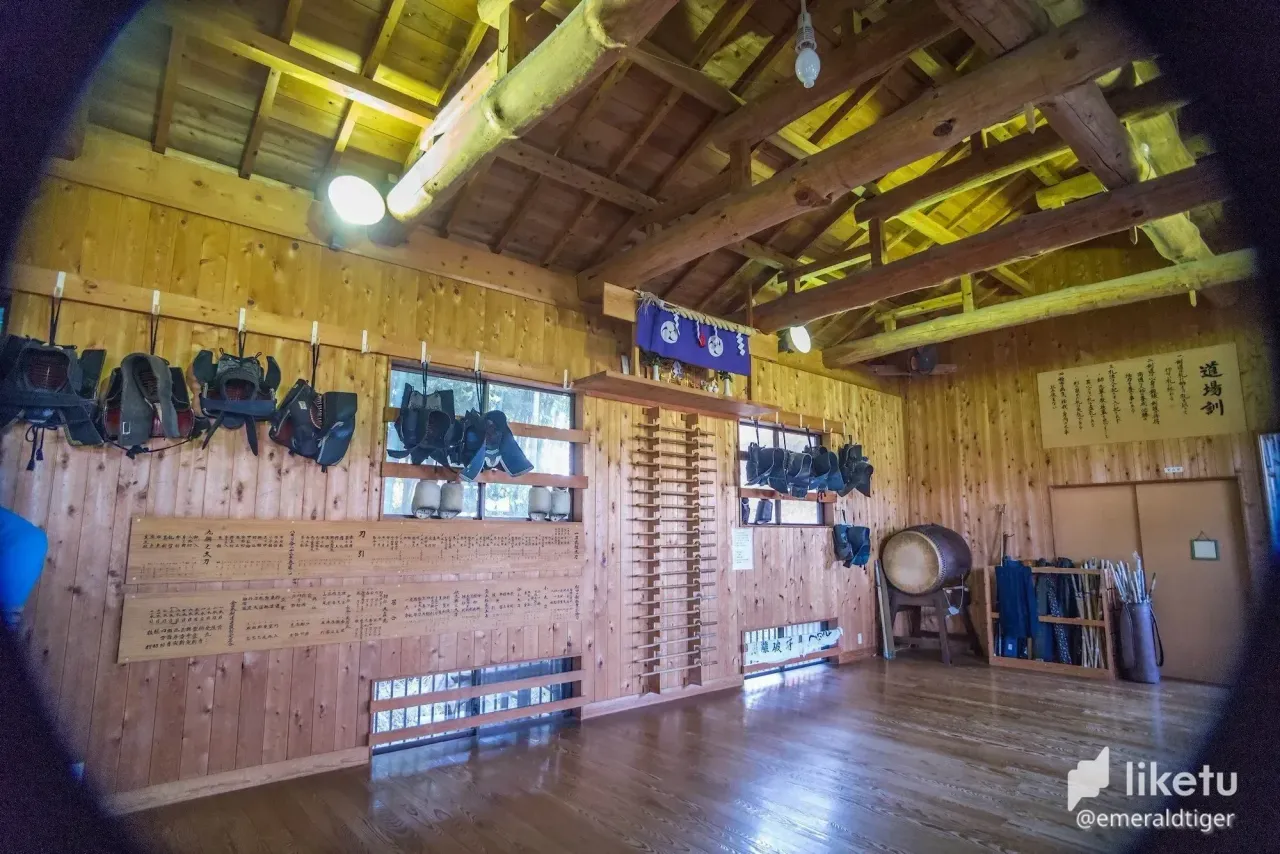
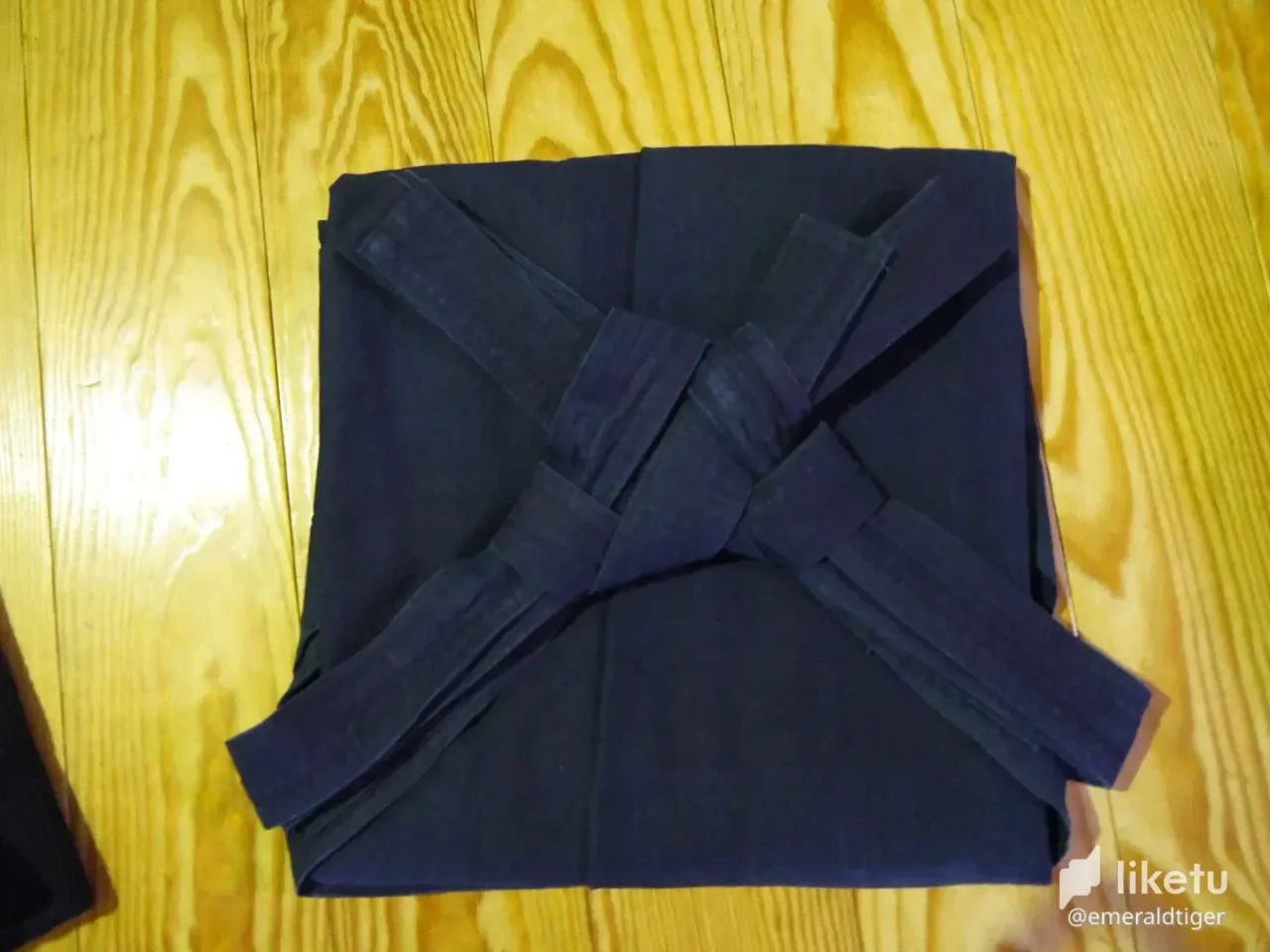
Hello everyone,
Today I would like to tell you about an experience I had several years ago (2016, it's starting to happen!) during which I had the opportunity to try Kendo, the Japanese sword art. It was at the Ishiyama dojo in Tsuchiura, Ibaraki prefecture (north of Tokyo).
Kendo is literally the way of the sword: Kendo (剣道) is composed of 2 characters, the first ken (剣) meaning sword/saber and the second Do (道) meaning the way/path. Note that here the term "way" refers to the Buddhist view of the concept. Furthermore, it is interesting to note that Kendo, as we know it today, is modern martial art! Indeed, there are two important dates. The first one is the abolition of the sword during the Meiji era in 1876 and the second one is the surrender of Japan in 1945.
Since the abolition of the sword, new versions of martial arts started to develop. The main difference is in the purpose of learning martial arts. The "traditional" techniques, called Koryu in Japanese, have the objective of training fighters and teaching ways to kill and make war. The "modern" techniques (Genryu in Japanese) are more gentle and instead of teaching how to give death, they want to show how to develop oneself. The two styles coexisted until 1945 when everything suddenly stopped for Japanese martial arts.
Indeed, when the Americans settled in Japan, they started by closing all the dojos and forbidding the practice of martial arts in all of Japan. The decision of the government of General Douglas MacArthur is very sensible from the American point of view. Indeed, dojos can easily constitute places of resistance and of diffusion of political ideas which are attached to them.
It is important to know that each dojo had its own secret techniques which were only taught to a small number of disciples! All these techniques were sometimes even transmitted only to the heirs of the same blood so that they never left the family!
So we have a problem: these jealously guarded techniques become impossible to transmit with the closing of the dojo! And the holders of these secret techniques have of course preferred to die with their secrets than to produce documents allowing future students to master them.
Japanese martial arts were officially authorized on a case-by-case basis by the American administration a few decades later and this gave the martial arts we know today: kendo, judo, and aikido... Of course, many people have traveled around Japan in search of lost techniques and some have been found! But there is still a thick mystery and a lot of speculation about what has been lost. Indeed, there is enough to feed the wildest fantasies!
Thanks for reading to the end, I hope you enjoyed this post about kendo (which turned into a post about the history of Japanese martial arts xD )!
As always, feel free to leave a comment!
Bonjour à tous,
Aujourd'hui je voudrais vous parler d'une expérience que j'ai eue il y a plusieurs années de cela (2016, ça commence à remonter!) au cours de laquelle j'ai pu m'essayer au Kendo, l'art du sabre japonais. C'était au dojo Ishiyama à Tsuchiura dans la préfecture d'Ibaraki (au nord de Tokyo).
Le Kendo est littéralement la voie du sabre : Kendo (剣道) est composé de 2 caractères, le premier ken (剣) signifiant sabre/épée et le second Do (道) signifiant la voie/le chemin. A noter que ici le terme de "voie" fait référence à la vision Bouddhiste de la notion. Par ailleurs, il est intéressant de noter que le kendo tel que nous le connaissons aujourd'hui est un art martial moderne! En effet, il y a deux dates importantes. La première c'est la loi de l'abolition du port du sabre au cours de l'ère Meiji in 1876 et la seconde c'est la capitulation du Japon en 1945.
Dès l'abolition du port du sabre, de nouvelles version des arts martiaux commencent à se développer. La différence principale est dans le but de l'apprentissage des arts martiaux. Les techniques dites "traditionnelles", appellés Koryu en japonais, ont pour objectif de former des combattants et enseignent des moyens de tuer et faire la guerre. Les techniques dites "modernes" (Genryu en japonais) se veulent plus douces et au lieu d'enseigner comment donner la mort, elles veulent montrer comment se développer personnellement. Les deux styles coexistent jusqu'en 1945, date à laquelle tout s'arrête soudainement pour les arts martiaux japonais.
En effet, lorsque les américains s'installent au Japon, ils commencent par faire fermer tous les dojo et interdire la pratique des arts martiaux dans tout le Japon. La décision du gouvernement du général Douglas MacArthur est très censée du point de vue américain. En effet les dojo peuvent aisément constituer des lieux de résistance et de diffusion des idées politiques qui y sont rattachées. Il faut savoir que chaque dojo avait ses techniques secrètes qui n'étaient enseignées qu'à un petit nombre de disciples! Toutes ces techniques étaient parfois même transmises uniquement aux héritiers de même sang pour qu'elles ne quittent jamais la famille!
Dès lors, nous avons un problème: ces techniques jalousement gardées deviennent impossibles à transmettre avec la fermeture des dojo! Et les détenteurs de ces techniques secrètes ont bien entendu préféré mourir avec leurs secrets plutôt que de produire des documents permettant à de futurs étudiant de les maîtriser.
Les arts martiaux japonais ont été officiellement autorisés au cas par cas par l'administration américaine quelques décennies plus tard et cela a donné les arts martiaux que nous connaissons aujourd'hui: kendo, judo, aikido... Bien entendu, nombreux sont ceux qui ont parcouru le Japon à la recherche des techniques perdues et certaines ont été retrouvées! Mais il y a encore un épais mystère et beaucoup de spéculations concernant ce qui a été perdu. En effet, il y a de quoi nourrir les fantasmes les plus fous!
Merci d'avoir lu jusqu'au bout, j'espère que vous apprécié ce post sur le kendo (qui s'est transformé en post sur l'histoire des arts martiaux japonais xD )!
Comme toujours, n'hésitez pas à laisser un commentaire!